
The D♭ minor chord (Dbm triad) is widely used in the piano world, captivating with its harmonic richness. Frequently used in jazz, classical music and ballads, it offers a broad emotional palette, ideal for expressing introspection and sensitivity in your compositions or interpretations. Its two inversions, by enriching the harmony, enable pianists to navigate the keyboard with ease, opening the way to greater musical creativity. This article will reveal the techniques for mastering the D♭ minor chord and its inversions, step by step, making this chord accessible to pianists of all levels.
Learn chords and more with the La Touche Musicale app
The D♭ minor chord is a musical chord composed of three notes: D♭, F♭ and A♭. It is renowned for its dark, emotionally charged timbre, often associated with expressions of nostalgia and melancholy. Popular in many musical genres, from classical to jazz and pop, this chord brings a unique depth to compositions. Its use creates an introspective mood, inviting the listener on an intimate emotional journey.
A♭ – Fifth finger (5)
F♭ – Third finger (3)
D♭ – First finger (1)


A♭ – First finger (1)
F♭ – Third finger (3)
D♭ – Fifth finger (5)
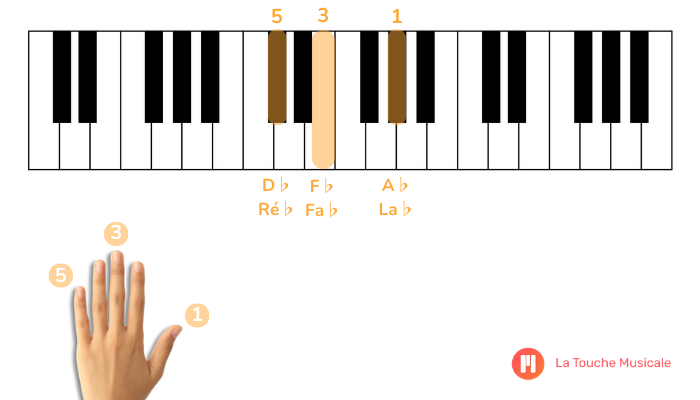

Learn chords and more with the La Touche Musicale app
D♭ – Fifth finger (5)
A♭ – Second finger (2)
F♭ – First finger (1)
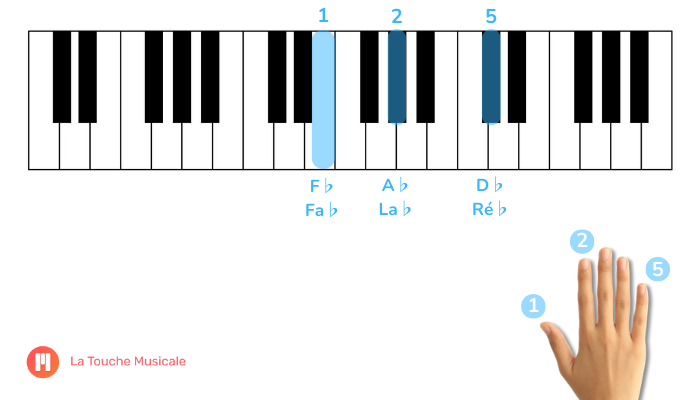

D♭ – First finger (1)
A♭ – Third finger (3)
F♭ – Fifth finger (5)
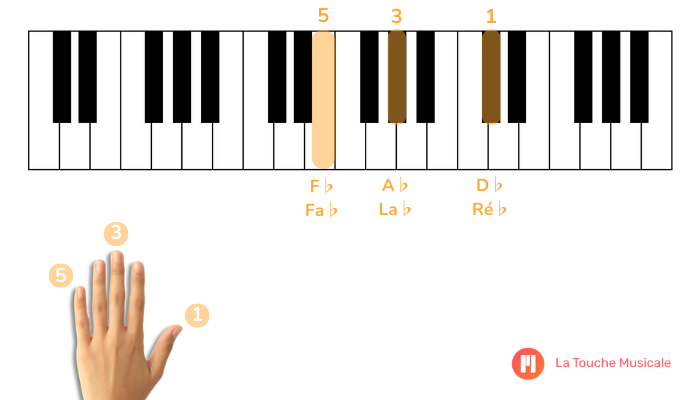

F♭ – Fifth finger (5)
D♭ – Third finger (3)
A♭ – First finger (1)
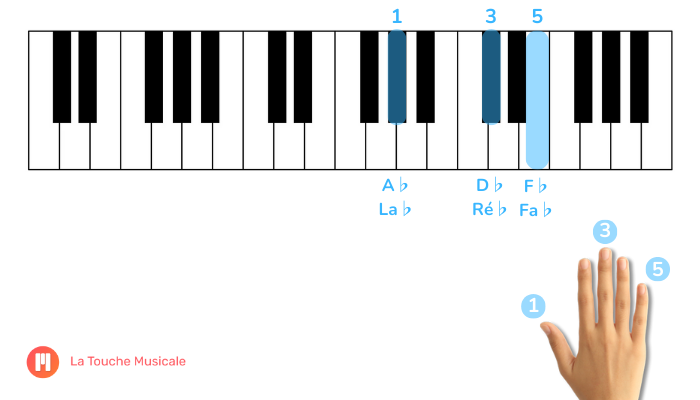

F♭ – First finger (1)
D♭ – Second finger (2)
A♭ – Fifth finger (5)
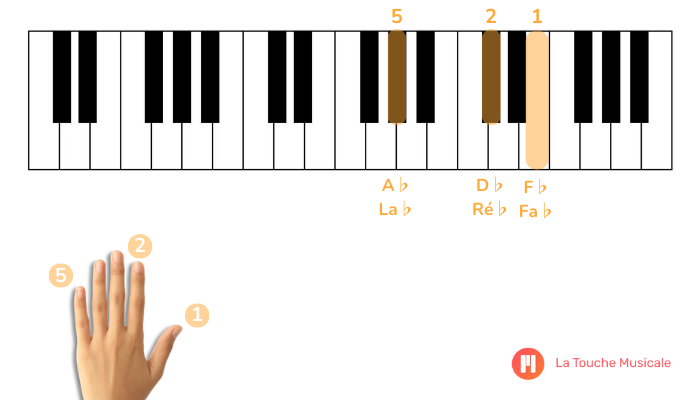

Learn chords and more with the La Touche Musicale app
It’s always worth practicing piano exercises to master certain chords or scales. Here, we give you a few exercises you can repeat every week to improve your practice of the D♭ minor chord. You can also use our app La Touche Musicale, which shows you how to play this chord interactively with your favorite songs.
We advise you to practice these exercises regularly for maximum effectiveness. The aim is not only to play the chord correctly, but also to understand its role and effect in various musical contexts.
This song uses the D♭ minor chord to create a mood that is both joyful and introspective, demonstrating the versatility of this chord in a variety of musical contexts.
This iconic ’90s alternative rock song makes excellent use of the D♭ minor chord, contributing to the composition’s rich sonic texture. The chord adds an emotional depth that underscores the song’s themes of loss and unfulfilled desire.
This song, from Fiona Apple’s debut album, uses complex minor chords, including D♭ minor, to create a dark, captivating mood. The use of this chord enriches the melody, underlining the tension and conflict expressed in the lyrics.
The D♭ minor chord, with its rich, nostalgic sound, plays a crucial role in enriching contemporary musical compositions. Through practical exercises and the exploration of popular songs that use it, we’ve seen how it can transform a simple melody into a more accomplished musical work. Mastering the Dbm chord and its inversions is therefore a key step for any pianist wishing to express a wider range of musical feelings.
It’s a triad made up of a root note, a third and a fifth.
A♭ – Fifth finger (5)
F♭ – Third finger (3)
D♭ – First finger (1)
D♭ – Fifth finger (5)
A♭ – Second finger (2)
F♭ – First finger (1)
F♭ – Fifth finger (5)
D♭ – Third finger (3)
A♭ – First finger (1)
La Touche Musicale is a popular app specialized in piano learning. You can register for free and learn to play your favorite songs with this chord and many others.
You can use our La Touche Musicale app or browse our blog category to learn how to play all the popular piano chords.
Help democratize piano learning by sharing this article:
Learn to play all the chords to your favorite songs on the piano




Legal